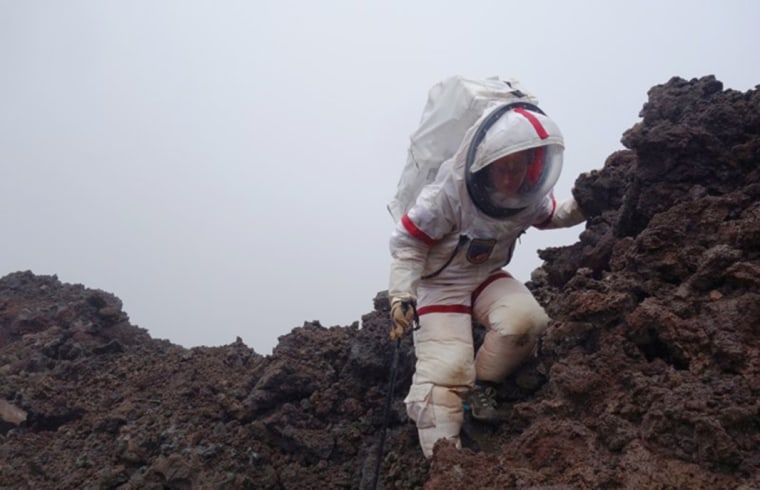Astronauts making a years-long voyage to Mars may get bombarded with enough cosmic radiation to seriously damage their brains, researchers reported Monday.
The damage might be bad enough to affect memory and, worse, might heighten anxiety, the team at the University of California Irvine said.
It’s the second study the team has done to show that cosmic radiation causes permanent, and likely untreatable, brain damage. While their experiments involve mice, the brain structures that are damaged are similar, they write in the Nature journal Scientific Reports.
“Our data provide additional evidence that deep space travel poses a real and unique threat to the integrity of neural circuits in the brain,” Charles Limoli and colleagues write in their report.
NASA knows that astronauts risk physical damage from the radiation encountered in space. Earth is enveloped in a large, protective sheath called the magnetosphere, which deflects a lot of the ionizing radioactive particles that speed through space.
“Our data provide additional evidence that deep space travel poses a real and unique threat to the integrity of neural circuits in the brain."
Teams aboard the International Space Station are inside that envelope. But moon travelers were not, and this summer a study showed the cosmic radiation may have damaged the hearts of many of the Apollo program astronauts.
A trip to Mars would expose astronauts to even more radiation — enough to cause cancer, for sure, and now this research suggests brain damage, as well.
“Such conditions could clearly be problematic for astronauts and their capability to efficiently operate over the course of a deep space mission,” Limoli’s team wrote.
They bombarded mice with the same type of radiation that would be encountered in space, and then looked at what happened to their brains.

It did not look good. The changes were seen in the connections between brain cells and in the cells, as well.
“Deficits in fear extinction could make you prone to anxiety, which could become problematic over the course of a three-year trip to and from Mars,” Limoli said.
Related: Could Plastic Shield Astronauts From Radiation?
“Exposure to these particles can lead to a range of potential central nervous system complications that can occur during and persist long after actual space travel — such as various performance decrements, memory deficits, anxiety, depression and impaired decision-making. Many of these adverse consequences to cognition may continue and progress throughout life.”
“Using materials that shield more efficiently would cut down on weight and cost, but finding the right material takes research and ingenuity."
NASA has been looking hard at the problem, since a major goal is to get people to Mars by the 2030s.
“There are two ways to shield from these higher-energy particles and their secondary radiation: use a lot more mass of traditional spacecraft materials, or use more efficient shielding material,” NASA said last year on their website. "The sheer volume of material surrounding a structure would absorb the energetic particles and their associated secondary particle radiation before they could reach the astronauts."
But that could get heavy and expensive.
“Using materials that shield more efficiently would cut down on weight and cost, but finding the right material takes research and ingenuity," the agency wrote. "NASA is currently investigating a handful of possibilities that could be used in anything from the spacecraft to the Martian habitat to space suits.”
